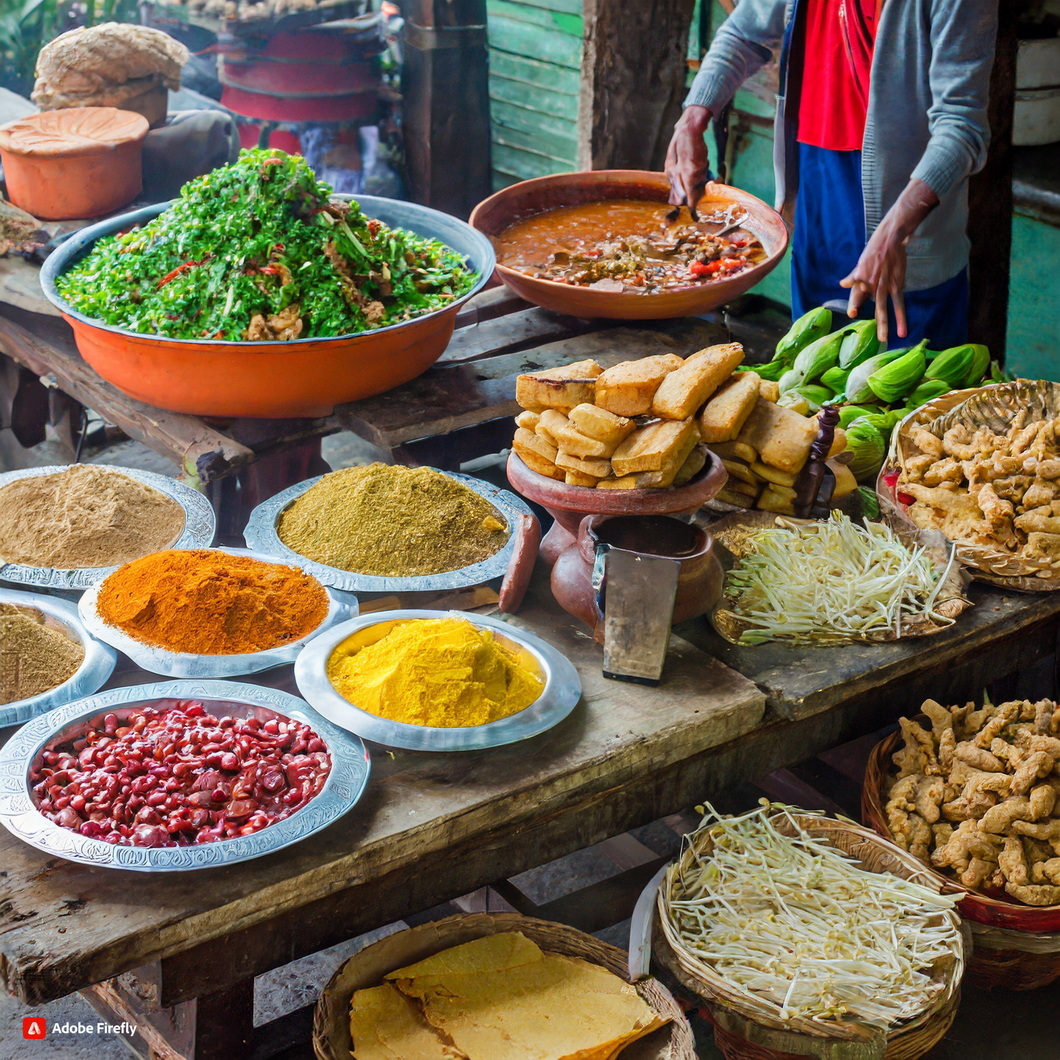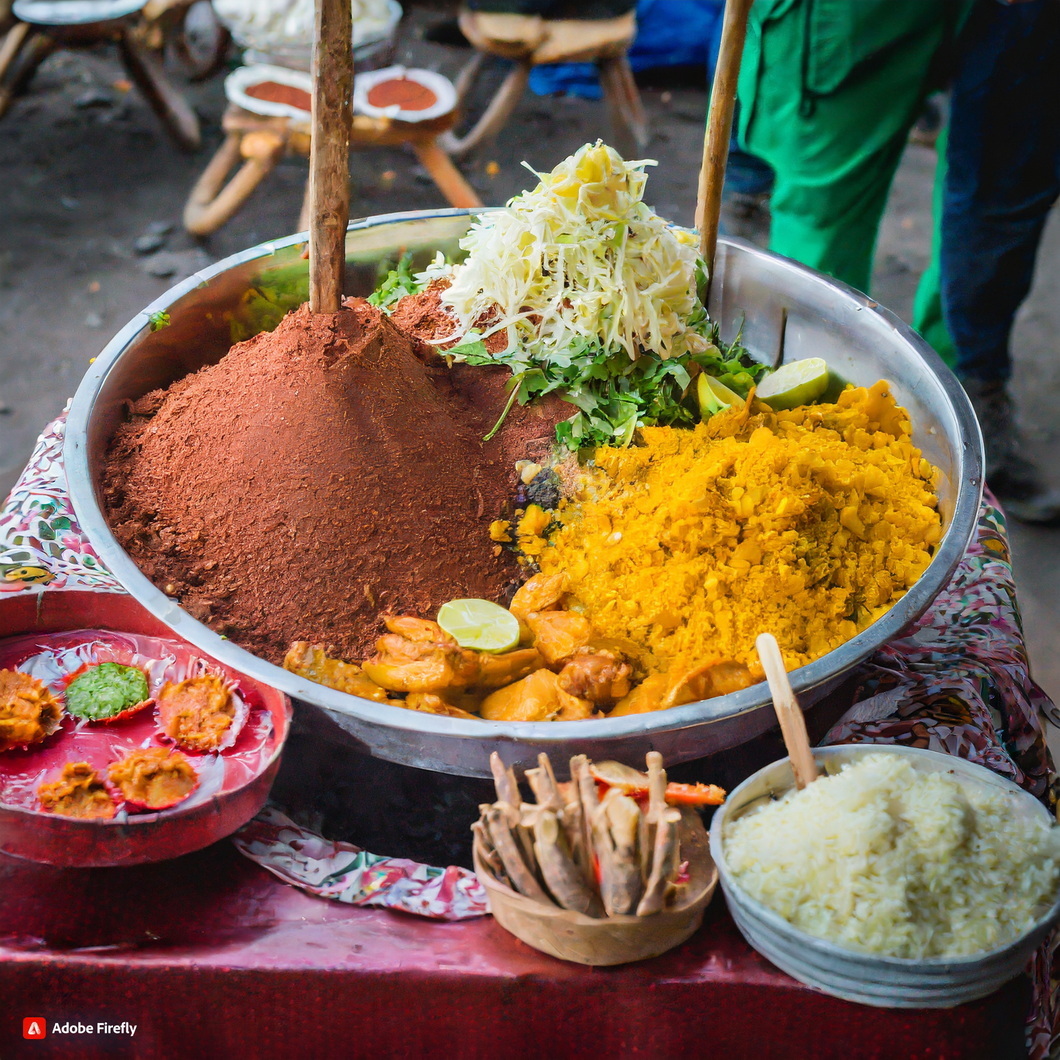Introduction
Street Bites Saga is a journey through the rich and diverse world of Street food culture. From bustling cities to small towns, street food has become an integral part of daily life for many people around the globe. This series delves into the origins of street food, exploring its evolution and the unique flavors and traditions that have shaped it into the vibrant and beloved culinary experience it is today.

Join us as we uncover the stories behind some of the most iconic street bites and discover the cultural significance and community that surrounds them. Get ready to embark on a mouth-watering adventure with Street Bites Saga.
The History of Street Food Culture: From Ancient Times to Modern Day
Street food has become a staple in many cities around the world, with bustling food trucks and vibrant night markets offering a variety of delicious and affordable options. But have you ever wondered about the origins of this popular food culture? Where did it all begin and how has it evolved over time? Join us as we take a journey through the history of Street food culture, from ancient times to modern day.
The concept of street food can be traced back to ancient civilizations, where vendors would sell food on the streets to travelers and locals alike. In ancient Rome, for example, street food was a common sight, with vendors selling everything from roasted chestnuts to honey cakes. In China, street food has been a part of the culture for centuries, with the famous night markets offering a wide array of dishes to hungry patrons.

As trade and travel increased, street food became a way for people to try new and exotic flavors from different regions. In the Middle Ages, street food was a popular option for pilgrims and merchants who were constantly on the move. In fact, the word “picnic” comes from the French word “pique-nique”, which referred to a meal that was eaten outdoors, often consisting of street food.
During the Industrial Revolution, street food became even more prevalent as workers needed quick and affordable meals during their long shifts. In the United States, the hot dog and pretzel carts became a common sight on the streets of New York City, providing sustenance to the working class. In India, street food vendors known as “dhabas” popped up along highways, offering travelers a taste of local cuisine.
However, it wasn’t until the 20th century that street food truly exploded in popularity. With the rise of urbanization and the growth of cities, street food became a way for people to grab a quick and tasty meal on the go. In countries like Thailand and Mexico, street food became an integral part of the culture, with vendors selling everything from tacos to pad thai.
In the 1970s, the food truck trend began to take off in the United States, with the iconic ice cream truck and taco truck becoming a common sight. These mobile kitchens allowed chefs and entrepreneurs to bring their culinary creations to the streets, offering a more diverse and gourmet selection of street food.
Today, Street food culture continues to thrive and evolve, with a mix of traditional and modern influences. In cities like London and Singapore, street food markets have become a popular destination for foodies, offering a variety of cuisines from around the world. In fact, Singapore’s hawker centers have been recognized by UNESCO as an Intangible Cultural Heritage, highlighting the significance of street food in the country’s culture.
The rise of social media has also played a role in the popularity of street food, with food bloggers and influencers sharing their favorite finds and creating a buzz around certain vendors. This has also led to a fusion of different cuisines, as vendors experiment with new flavors and techniques to stand out in a crowded market.
In conclusion, the history of Street food culture is a long and fascinating one, with its roots dating back to ancient civilizations. From humble beginnings as a way to feed travelers and workers, street food has evolved into a global phenomenon, offering a diverse and delicious array of options to people all over the world. So next time you grab a bite from a food truck or a night market, remember the rich history behind this beloved food culture.
Street Bites Saga: A Culinary Journey Through the Evolution of Street Food
Street food has become a staple in many cities around the world, offering a quick and delicious option for hungry passersby. From food trucks to bustling night markets, street food has evolved into a global phenomenon, with each country and culture putting their own unique spin on it. But have you ever wondered where this Street food culture originated from? Join us on a culinary journey as we explore the origins of street food and how it has evolved over time.
The history of street food can be traced back to ancient civilizations, where vendors would sell food on the streets to travelers and locals alike. In ancient Rome, street food was a common sight, with vendors selling everything from roasted chestnuts to sausages. Similarly, in ancient China, street food was a way for farmers to sell their produce and for travelers to refuel on their journeys.

As time went on, street food continued to be a popular option for those on the go. In the Middle Ages, street food became a way for the poor to make a living by selling affordable and convenient meals to the working class. This trend continued into the Industrial Revolution, where street food became a quick and cheap option for factory workers.
However, it wasn’t until the 19th century that street food truly began to take shape as we know it today. In the bustling cities of New York and London, immigrants brought their own cultural dishes to the streets, creating a diverse and vibrant street food scene. From hot dogs and pretzels in New York to fish and chips in London, these dishes quickly became iconic street food staples.
The 20th century saw the rise of food trucks, which became a popular option for street food vendors. In the United States, food trucks were a common sight at construction sites and factories, providing workers with a quick and convenient meal. In the 1970s, the popularity of food trucks grew even more with the introduction of the taco truck in Los Angeles, which brought Mexican street food to the masses.
In recent years, street food has experienced a resurgence, with food trucks and street food markets popping up in cities all over the world. This can be attributed to the rise of foodie culture and the demand for unique and authentic dining experiences. Street food has also become a way for aspiring chefs to showcase their talents and experiment with new and innovative dishes.

One of the most exciting aspects of street food is the fusion of different cultures and cuisines. In cities like Singapore and Bangkok, street food is a melting pot of flavors, with influences from Chinese, Indian, and Malay cuisines. This fusion of flavors has not only created delicious dishes but has also brought people from different backgrounds together through food.
The evolution of street food has also been influenced by technology. With the rise of social media, food trucks and street food vendors can now easily promote their offerings and reach a wider audience. This has also led to the creation of foodie events and festivals, where people can sample a variety of street food in one place.
In conclusion, street food has come a long way from its humble beginnings in ancient civilizations. It has evolved into a global phenomenon, with each country and culture putting their own unique spin on it. From its origins as a way for the poor to make a living to its current status as a popular dining option, street food continues to evolve and adapt to the changing times. So next time you grab a bite from a food truck or indulge in some street food at a night market, remember the rich history and cultural influences behind it.
Q&A
Q: What is Street Bites Saga?
A: Street Bites Saga is a documentary series that explores the origins and evolution of Street food culture around the world.
Conclusion
In conclusion, Street Bites Saga provides a fascinating look into the origins of Street food culture. Through its exploration of various street food vendors and their unique dishes, the documentary showcases the rich history and cultural significance of street food around the world. It also sheds light on the challenges and innovations that have shaped the street food industry over time.
Overall, Street Bites Saga is a must-watch for anyone interested in food, culture, and the human experience. It highlights the universal appeal of street food and its ability to bring people together through the shared experience of enjoying delicious and affordable meals on the streets.
Please follow us on linkedin. You can learn all best canadian food recipes you can check our Culinary 1TouchFood Youtube and Telegram 1TouchFood page. Don’t forget Fighting Obesity Magazine and Radio Cooking.

